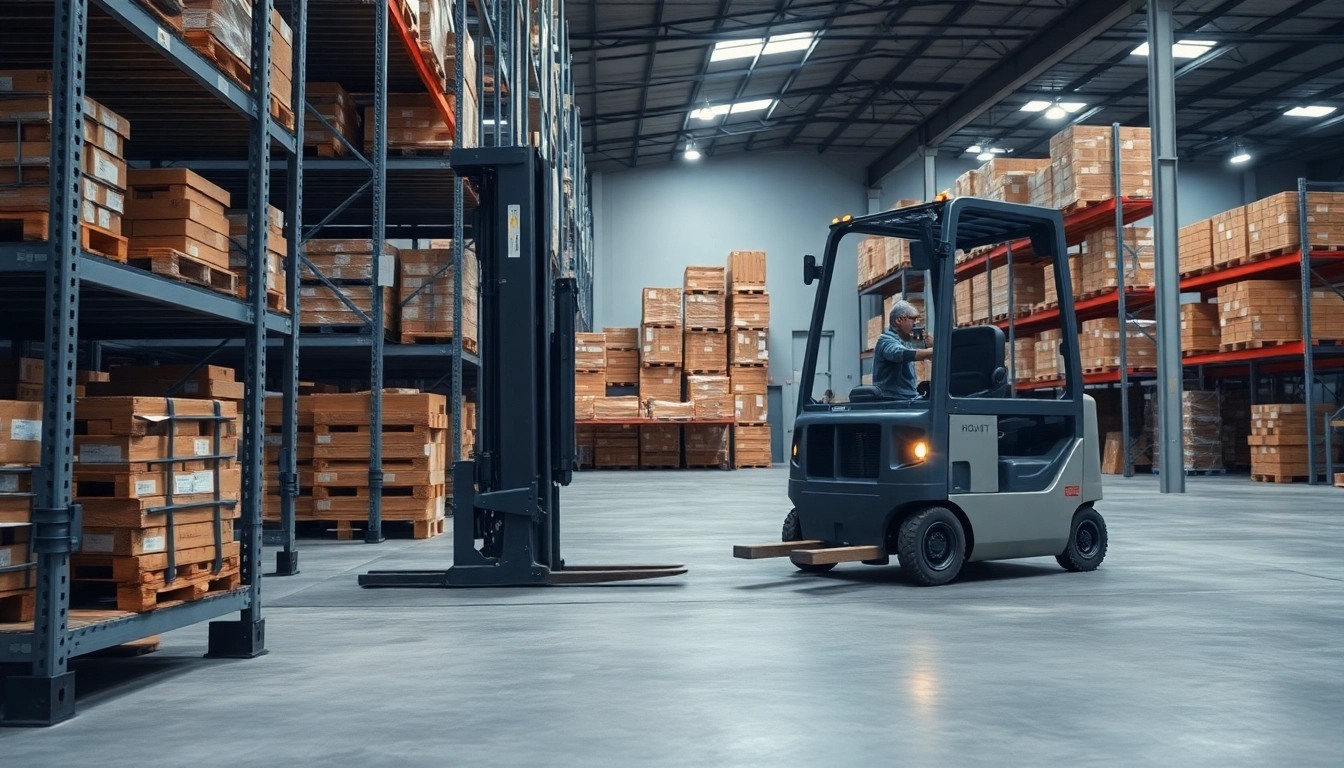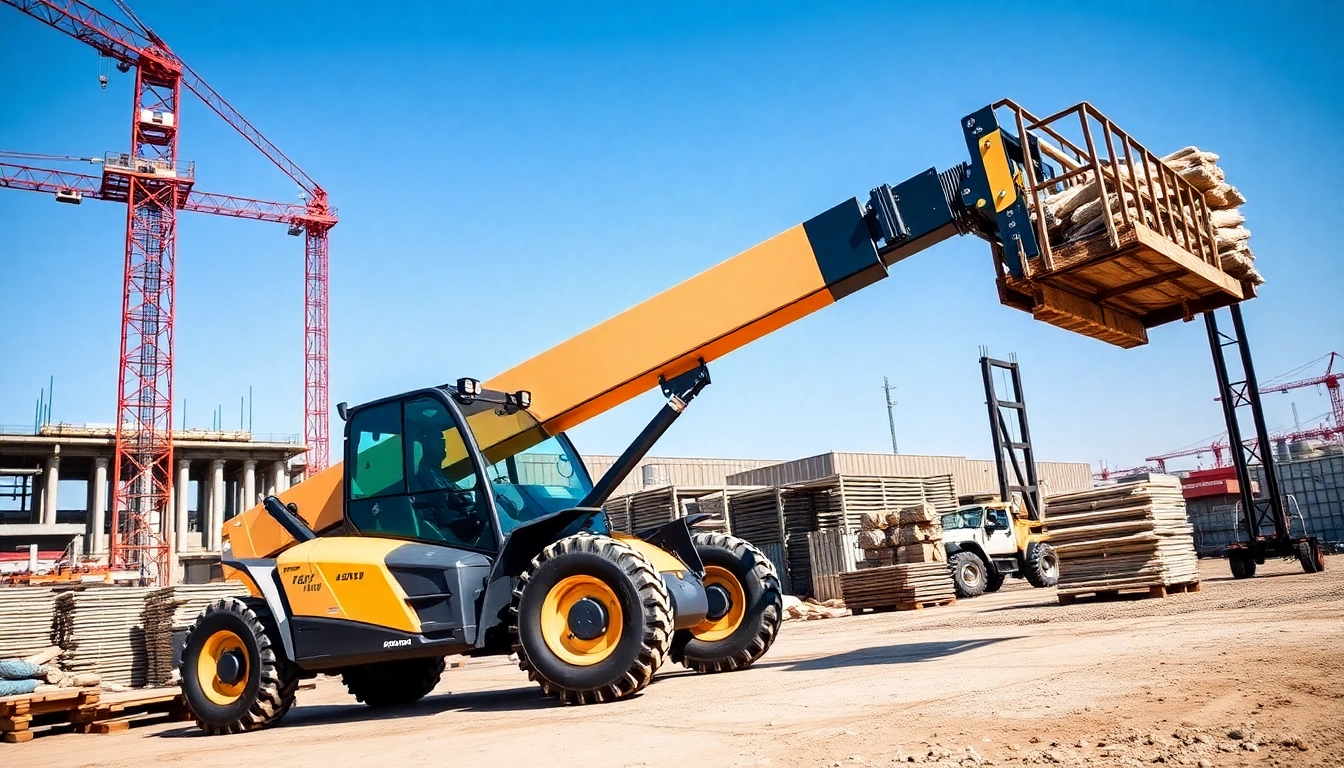Understanding Forklift Rental: Benefits and Key Considerations
In today’s fast-paced industrial and commercial environments, the efficiency of material handling operations directly influences productivity and profitability. Forklifts are essential tools in warehouses, construction sites, manufacturing plants, and distribution centers, facilitating the movement of heavy loads with speed and precision. While owning a forklift might seem like a straightforward investment, many businesses are increasingly turning towards forklift rental as a flexible and cost-effective alternative. This approach not only reduces capital expenditure but also offers access to a wide range of machinery suited for various tasks and environments.
Understanding the nuances of forklift rental—its benefits, types, considerations, and best practices—can empower companies to optimize their operations, reduce downtime, and adapt swiftly to changing demands. This comprehensive guide delves into the critical aspects of forklift rental, highlighting why it’s a strategic choice for many UK businesses aiming for operational excellence.
Why choose forklift rental over purchasing?
Deciding between purchasing or renting a forklift hinges on numerous factors, including budget, operational needs, and long-term strategic goals. Here are some compelling reasons why forklift rental often outperforms outright purchase for many organizations:
- Cost Savings and Budget Flexibility: Buying a forklift involves significant capital expenditure, with additional costs for maintenance, insurance, and repairs. Renting transforms this expense into a predictable operational cost, often payable monthly, enabling better cash flow management.
- Access to the Latest Technology: Equipment technology evolves rapidly, with newer models offering enhanced safety features, energy efficiency, and productivity. Rental agreements allow businesses to upgrade machinery regularly without the burden of ownership.
- Reduced Maintenance Burden: Reputable rental companies typically include maintenance and servicing within the rental agreement. This minimizes downtime and ensures safety compliance, freeing your team from technical oversight.
- Flexibility in Equipment Use: Rental arrangements can be scaled up or down depending on project phases, seasonal demand, or unexpected workload spikes, offering unmatched operational agility.
- Lower Risks and Liabilities: Rental companies take on risks related to obsolescence and residual value, providing peace of mind and reducing financial uncertainty.
For businesses with fluctuating needs or those seeking to avoid long-term asset commitment, rental presents a pragmatic, scalable, and financially prudent solution.
Types of forklifts available for rent
Forklifts come in various designs, sizes, and power sources, each suited to different operational environments and load requirements. When selecting a forklift for rental, understanding the different types available is crucial:
Counterbalance Forklifts
These are the most common forklifts in the UK, featuring a weight at the rear to balance the load carried on the forks. Suitable for warehouse stacking, loading, and unloading activities, they come with diesel, electric, or LPG engines. Electric models are preferred for indoor applications due to zero emissions and quieter operation.
Order Pickers
Designed for height-specific tasks, these forklifts allow operators to lift themselves along with the load, ideal for warehouse racking systems with high shelves. They are compact and maneuverable, often electric-powered.
Reach Trucks
Specialized for narrow aisles, reach trucks extend their forks forward to access high shelving without requiring wide clearance. Their precise control makes them ideal for tight warehouse spaces.
Telehandlers
Often referred to as telescopic handlers, telehandlers are versatile machines with extendable arms used for lifting loads to elevated heights, especially on construction sites, farming, or industrial settings.
Pallet Trucks and Stackers
Smaller and more maneuverable, these are perfect for light-duty tasks such as moving pallets over short distances within warehouses or shops.
Specialized Forklifts
Include rough terrain forklifts for outdoor construction, electric forklifts for clean indoor environments, and custom configurations based on specific industry needs.
The choice of forklift type significantly impacts efficiency, safety, and operational costs. Rental providers often offer a selection of models, enabling businesses to select the most appropriate machine based on load capacity, working height, and environmental factors.
Essential factors to consider before renting
Choosing the right forklift rental involves thorough assessment of your operational requirements and environment. Here are key factors to guide your decision:
Load Capacity and Size
Determine the maximum weight and dimensions of loads you’ll be handling. Overestimating capacity leads to unnecessary expenses, while underestimating can compromise safety and efficiency.
Working Environment
Indoor or outdoor? Smooth concrete floors or rough terrain? Electric or diesel-powered forklifts? Each scenario has specific needs. For instance, electric forklifts are ideal for indoor use due to zero emissions, whereas rough terrain models excel outdoors.
Height and Reach Requirements
Assess the maximum stacking height and load reach. High-lift applications necessitate specialized equipment like reach trucks or telehandlers.
Duration and Frequency of Use
Identify whether your project demands short-term hires—days or weeks—or long-term arrangements spanning months or years. This influences rental costs and contract terms.
Budget and Cost Analysis
Compare prices across providers, considering hourly, daily, weekly, and monthly rates. Remember to account for additional costs such as delivery, fuel, insurance, and maintenance.
Safety and Compliance Standards
Ensure the rental provider adheres to UK safety regulations, provides well-maintained equipment, and offers necessary safety documentation and operator training options.
Support and Maintenance Services
Opt for suppliers that include or offer maintenance, technical support, and a reliable response time for repairs, minimizing operational disruptions.
How to Select the Right Forklift Rental Partner
Evaluating rental companies’ credentials and fleet quality
Start by researching potential suppliers’ reputation, years of experience, and customer reviews. A reputable company will maintain an extensive, well-serviced fleet and adhere to safety standards. Certifications from safety and industry bodies such as the Fork Lift Truck Association (FLTA) provide additional assurance of professionalism and compliance.
Assessing pricing, terms, and additional services
Request detailed quotes, paying attention to rental rates, deposit requirements, delivery charges, and return policies. Clarify whether maintenance is included, and explore optional add-ons like operator training, fuel options, or after-hours support.
Customer support and maintenance provisions
Effective support is vital. The provider should offer prompt communication, on-site technical assistance, and a transparent maintenance schedule. This ensures minimal downtime and ongoing safety compliance. Additionally, check their responsiveness to emergency repairs or operational issues.
Flexibility and scalability
A good rental partner offers flexible contract lengths and the ability to scale your fleet up or down dynamically, supporting your business growth or seasonal variations.
Value-added services
Some companies offer training programs, equipment transfer services, or integrated solutions like telematics for tracking utilization and performance. These services enhance operational efficiency and safety.
Step-by-Step Guide to Renting a Forklift
Determining your load requirements and environment
Begin with a comprehensive assessment of your operational needs — load sizes, handling frequency, indoor vs outdoor conditions, and space constraints. This foundation informs your choice of forklift type, size, and features.
Booking and scheduling rental periods
Plan your rental duration based on project timelines, seasonal demand, or maintenance schedules. Book in advance to secure preferred models and ensure prompt delivery.
Preparing your site for safe forklift operation
Ensure your workspace is clear of obstacles, adequately leveled, and has sufficient space for safe maneuvering. Conduct risk assessments and implement safety signage and barriers. Also, coordinate with your rental provider for operator training and safety instructions.
Operator training and safety protocols
Proper operator training is essential to maximize efficiency and minimize accidents. Many rental companies offer certification courses or guidance. Establish strict safety procedures, including PPE use, load stability checks, and adherence to UK health and safety standards.
Monitoring usage and maintenance schedules
Implement systemized tracking of equipment utilization. Regular inspections and maintenance schedules should be documented and adhered to, either via the rental company or internally if the machine is managed by your team.
Handling returns and end-of-rental procedures
Coordinate with your provider to ensure smooth pickup or return processes, inspect equipment for damages, and settle any outstanding charges. Maintain records for compliance and future reference.
Optimizing Forklift Rental for Business Performance
Implementing safety protocols and operator training
Develop comprehensive safety guidelines aligned with UK legislation and ensure all operators are trained and certified. Regular refresher courses, safety audits, and incident reporting foster a safety-first culture.
Monitoring usage and maintenance schedules
Leverage fleet management tools or manual logs to track operational hours, maintenance needs, and fuel consumption. Preventative maintenance reduces unexpected breakdowns and extends equipment lifespan.
Analyzing cost-effectiveness and scalability
Regularly review rental costs against operational output. Use data analytics to identify usage patterns, optimize fleet size, and renegotiate rental terms for better rates or upgraded models as your business evolves.
Case Studies & Best Practices in Forklift Rental
Success stories from UK companies using forklift rental
A leading logistics firm in Manchester transitioned to a flexible forklift rental model to manage seasonal peaks, cutting their equipment costs by 30% and improving operational agility. The company’s focus on trained operators and proactive maintenance resulted in fewer delays and higher safety standards.
Common challenges and how to overcome them
Challenges include misjudging load requirements, poor equipment selection, or inadequate training. Solutions involve thorough site assessment, selecting a reputable rental partner, and investing in operator education. Clear contractual terms and regular equipment audits also prevent unexpected costs and safety issues.
Future trends in forklift rental solutions
Emerging trends include the integration of telematics for real-time performance monitoring, automation and driverless technology, and eco-friendly electric vehicles. Rental providers are increasingly offering smart fleet management and flexible, digital-first services tailored to evolving industry needs.






